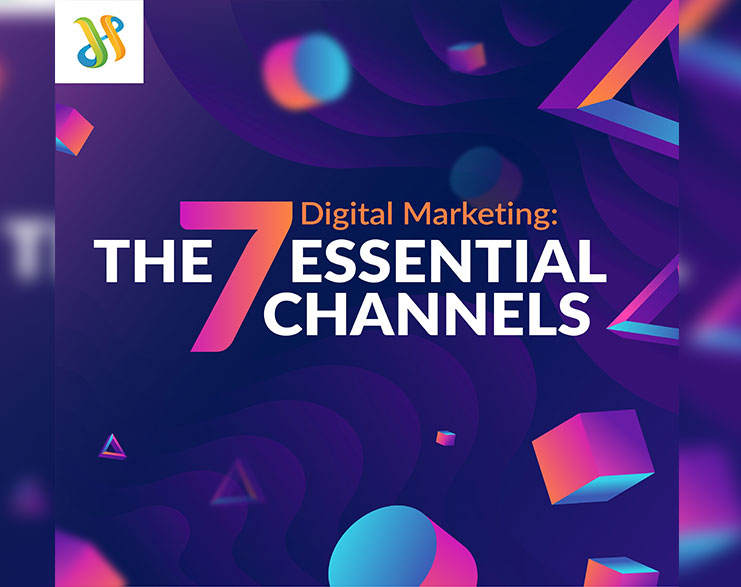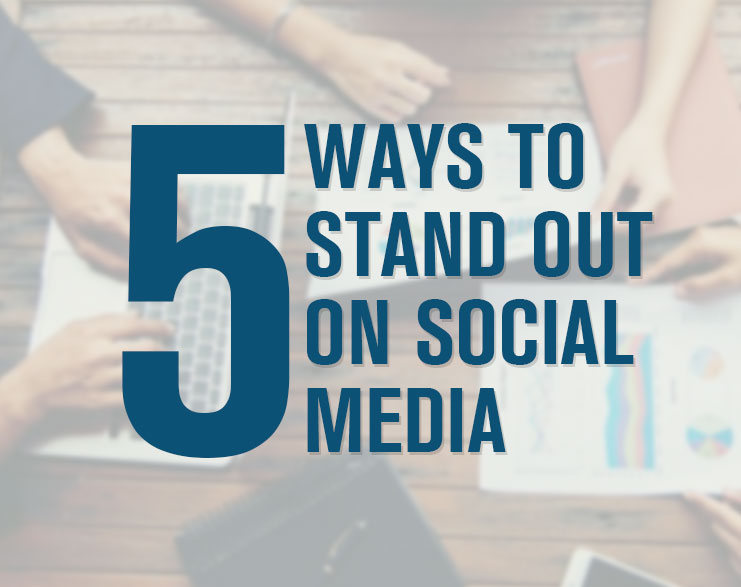The best ways to add people into your sales funnel is to use digital marketing to drive them to your website. The tools in the digital marketing toolbox include websites; search engine marketing (SEM) – which is an umbrella term that includes search engine optimization (SEO) and paid search – as well as online display advertising; social media marketing; mobile marketing; and email marketing.
While this may seem like a lot of channels, it’s also what makes digital marketing so powerful. With digital marketing, you have multiple touchpoints where you engage prospects and deepen your relationship with them across the board. There’s another reason to love digital marketing – it gives you the ability to see audiences interact with your brand and react to your marketing. Within hours of launching a campaign, you can gauge whether it’s working by analyzing the metrics you see with your analytics tools.
The bottom line is that digital marketing is one of the biggest things to happen to the market in the past 100 years, which is why we’re devoting several blog posts to the topic. We’ll cover the essentials of digital marketing so that you can have a rock-solid foundation upon which to build your next campaign. In future posts, we’ll take a deeper dive into some of the specifics behind each tactic.
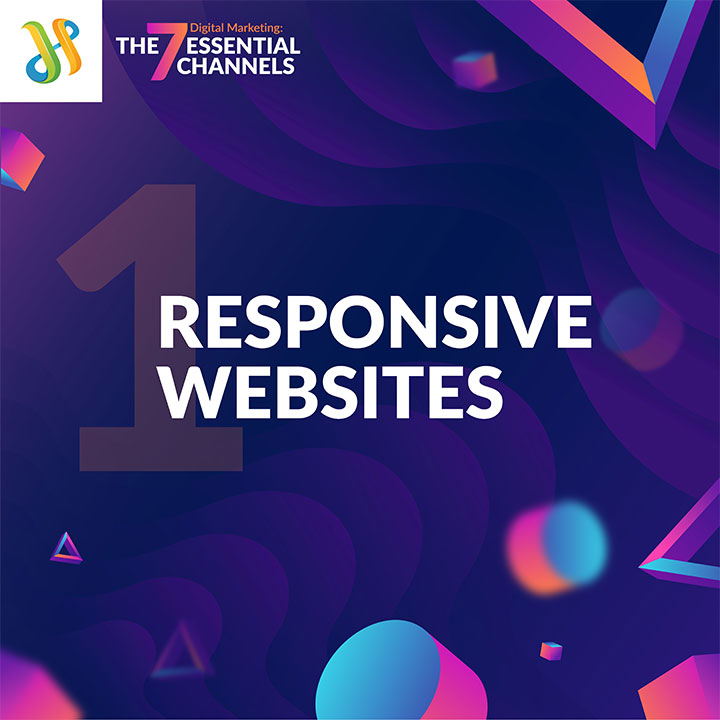 You’ve had a website for quite some time, otherwise, you wouldn’t be reading a post about digital marketing, right? But we want to make sure your website is optimized for mobile Why? Because 15% to 40% (or more) of your website visits are going to be via a mobile device.
You’ve got choices: You can do a dedicated mobile site or a responsive site. Most experts believe it’s best to have a responsive website that uses media queries to determine the screen size of the device. Accessing their content and automatically adjust to fit the screen.
If you haven’t already updated your website so that it’s mobile-friendly, make sure you ask your web design team to get started on that right away. After all, studies show that businesses that have well-executed mobile websites are more likely to attract prospects than businesses that don’t.
You’ve had a website for quite some time, otherwise, you wouldn’t be reading a post about digital marketing, right? But we want to make sure your website is optimized for mobile Why? Because 15% to 40% (or more) of your website visits are going to be via a mobile device.
You’ve got choices: You can do a dedicated mobile site or a responsive site. Most experts believe it’s best to have a responsive website that uses media queries to determine the screen size of the device. Accessing their content and automatically adjust to fit the screen.
If you haven’t already updated your website so that it’s mobile-friendly, make sure you ask your web design team to get started on that right away. After all, studies show that businesses that have well-executed mobile websites are more likely to attract prospects than businesses that don’t.
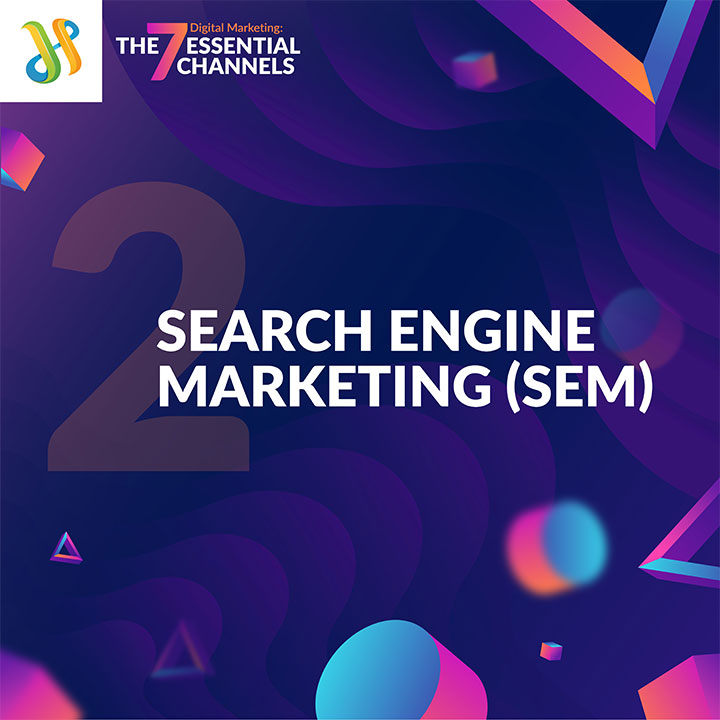 Search engine is a web-based tool that scours the World Wide Web to help users find the information they’re looking for. SEO marketing encompasses any activity that attempts to increase your ranking on these search engines.
SEM includes search engine optimization (SEO) which involves earning visibility within search engine results and paid search which involves paying to be visible within search engine results. The objective is to increase visibility by occupying the top spot within search results, however, the methods used to attain this goal greatly differ. They might range from object detection in images to having a video on the homepage— the techniques are aplenty. In order to gain more information, one can read various blogs such as Art Daily that might guide them in applying these methods to increase web traffic.
Search engine is a web-based tool that scours the World Wide Web to help users find the information they’re looking for. SEO marketing encompasses any activity that attempts to increase your ranking on these search engines.
SEM includes search engine optimization (SEO) which involves earning visibility within search engine results and paid search which involves paying to be visible within search engine results. The objective is to increase visibility by occupying the top spot within search results, however, the methods used to attain this goal greatly differ. They might range from object detection in images to having a video on the homepage— the techniques are aplenty. In order to gain more information, one can read various blogs such as Art Daily that might guide them in applying these methods to increase web traffic.
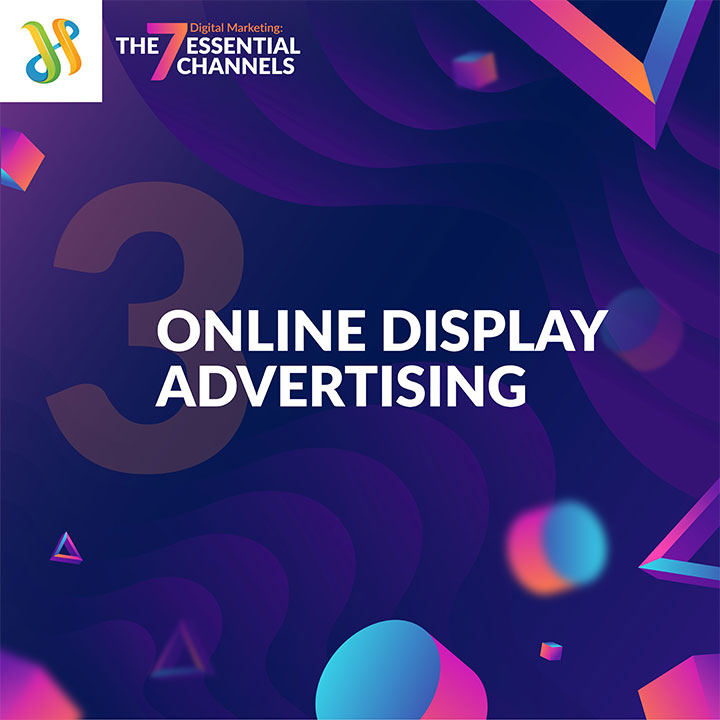 Online display advertising is, in many ways, a throwback to traditional advertising. You would run an ad in a magazine or newspaper to provide information about your product or service. Today, you can use display advertising to accomplish the same thing. Unlike traditional advertising, digital advertising comes in several different forms such as banner ads, video ads, interactive ads, and rich media ads.
With display advertising, marketers have the benefit of targeting audiences based on website content, geography, and device types. Furthermore, developments in the display ad buying process now allow marketers to pre-define their target audiences based on demographics and psychographics (e.g., tastes, attitudes, aspirations, and other psychological criteria). As an added bonus, you can target your prospects as they move from device to device.
Online display advertising is, in many ways, a throwback to traditional advertising. You would run an ad in a magazine or newspaper to provide information about your product or service. Today, you can use display advertising to accomplish the same thing. Unlike traditional advertising, digital advertising comes in several different forms such as banner ads, video ads, interactive ads, and rich media ads.
With display advertising, marketers have the benefit of targeting audiences based on website content, geography, and device types. Furthermore, developments in the display ad buying process now allow marketers to pre-define their target audiences based on demographics and psychographics (e.g., tastes, attitudes, aspirations, and other psychological criteria). As an added bonus, you can target your prospects as they move from device to device.
 The most common form of video advertising can be found on platforms such as YouTube. A video ad typically plays before, during, or after the content, an audience intends to watch. You can make the video ads clickable so that they drive more traffic to your website.
In addition to paying to run ads on YouTube, and similar venues, marketers can also create and distribute their own videos as part of their content marketing strategy. In fact, one study found that 80% of site visitors will watch a video, while only 20% will read a full blog post.
The most common form of video advertising can be found on platforms such as YouTube. A video ad typically plays before, during, or after the content, an audience intends to watch. You can make the video ads clickable so that they drive more traffic to your website.
In addition to paying to run ads on YouTube, and similar venues, marketers can also create and distribute their own videos as part of their content marketing strategy. In fact, one study found that 80% of site visitors will watch a video, while only 20% will read a full blog post.
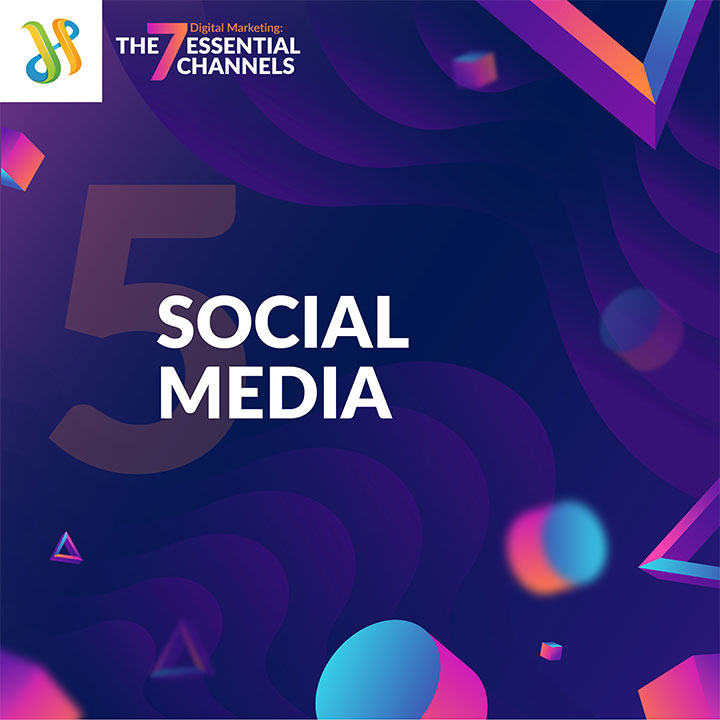 If you’re like most people, you probably have profiles on multiple social networking platforms and have engaged with your favorite (and at times, not-so-favorite) brands on those platforms.
Over the past couple of years, social networking platforms have also evolved into robust advertising platforms. This means you have the ability to run extremely targeted campaigns on these platforms, and ensure that no advertising dollar is wasted.
The most popular websites for both earned and paid marketing are Facebook, Twitter, LinkedIn, Instagram, and Pinterest. Each one of these tools has its strengths and weaknesses, so be sure to review your objectives before launching a campaign on any of these platforms.
If you’re like most people, you probably have profiles on multiple social networking platforms and have engaged with your favorite (and at times, not-so-favorite) brands on those platforms.
Over the past couple of years, social networking platforms have also evolved into robust advertising platforms. This means you have the ability to run extremely targeted campaigns on these platforms, and ensure that no advertising dollar is wasted.
The most popular websites for both earned and paid marketing are Facebook, Twitter, LinkedIn, Instagram, and Pinterest. Each one of these tools has its strengths and weaknesses, so be sure to review your objectives before launching a campaign on any of these platforms.
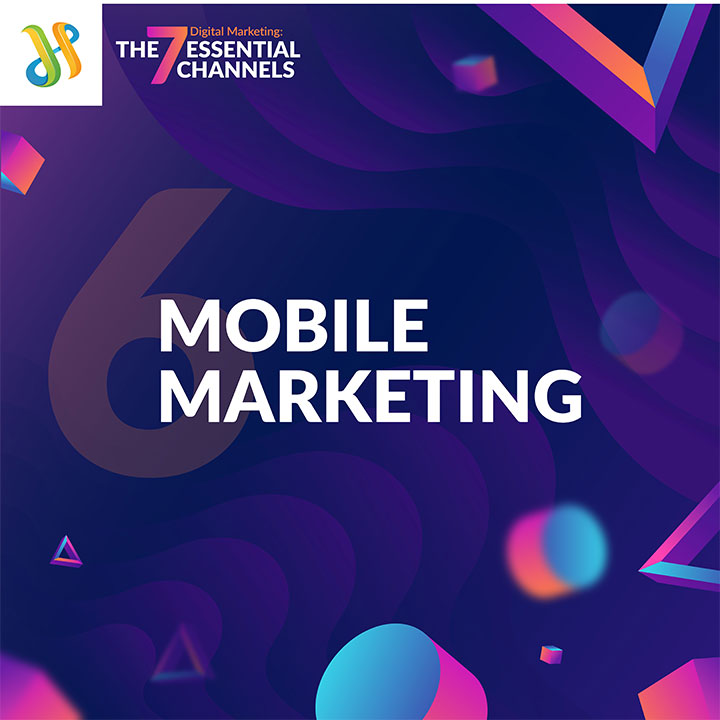 Mobile marketing, a subset of digital marketing, encompasses any marketing activity that targets users on mobile devices such as tablets or smartphones.
Many marketers feel that developing a mobile app is absolutely essential to reaching and engaging with their customers via mobile. However, there are easier and far more effective channels to reach your target audience on their mobile devices.
These channels could include:
Mobile marketing, a subset of digital marketing, encompasses any marketing activity that targets users on mobile devices such as tablets or smartphones.
Many marketers feel that developing a mobile app is absolutely essential to reaching and engaging with their customers via mobile. However, there are easier and far more effective channels to reach your target audience on their mobile devices.
These channels could include:
 Some marketers and industry pundits downplay the importance of email marketing; however, it turns out, that email is more central to marketing today than ever before. This is mainly because email is the most personal way brands can communicate with customers.
Some marketers and industry pundits downplay the importance of email marketing; however, it turns out, that email is more central to marketing today than ever before. This is mainly because email is the most personal way brands can communicate with customers.
1. Responsive Websites
 You’ve had a website for quite some time, otherwise, you wouldn’t be reading a post about digital marketing, right? But we want to make sure your website is optimized for mobile Why? Because 15% to 40% (or more) of your website visits are going to be via a mobile device.
You’ve got choices: You can do a dedicated mobile site or a responsive site. Most experts believe it’s best to have a responsive website that uses media queries to determine the screen size of the device. Accessing their content and automatically adjust to fit the screen.
If you haven’t already updated your website so that it’s mobile-friendly, make sure you ask your web design team to get started on that right away. After all, studies show that businesses that have well-executed mobile websites are more likely to attract prospects than businesses that don’t.
You’ve had a website for quite some time, otherwise, you wouldn’t be reading a post about digital marketing, right? But we want to make sure your website is optimized for mobile Why? Because 15% to 40% (or more) of your website visits are going to be via a mobile device.
You’ve got choices: You can do a dedicated mobile site or a responsive site. Most experts believe it’s best to have a responsive website that uses media queries to determine the screen size of the device. Accessing their content and automatically adjust to fit the screen.
If you haven’t already updated your website so that it’s mobile-friendly, make sure you ask your web design team to get started on that right away. After all, studies show that businesses that have well-executed mobile websites are more likely to attract prospects than businesses that don’t.
2. Search Engine Marketing (SEM)
 Search engine is a web-based tool that scours the World Wide Web to help users find the information they’re looking for. SEO marketing encompasses any activity that attempts to increase your ranking on these search engines.
SEM includes search engine optimization (SEO) which involves earning visibility within search engine results and paid search which involves paying to be visible within search engine results. The objective is to increase visibility by occupying the top spot within search results, however, the methods used to attain this goal greatly differ. They might range from object detection in images to having a video on the homepage— the techniques are aplenty. In order to gain more information, one can read various blogs such as Art Daily that might guide them in applying these methods to increase web traffic.
Search engine is a web-based tool that scours the World Wide Web to help users find the information they’re looking for. SEO marketing encompasses any activity that attempts to increase your ranking on these search engines.
SEM includes search engine optimization (SEO) which involves earning visibility within search engine results and paid search which involves paying to be visible within search engine results. The objective is to increase visibility by occupying the top spot within search results, however, the methods used to attain this goal greatly differ. They might range from object detection in images to having a video on the homepage— the techniques are aplenty. In order to gain more information, one can read various blogs such as Art Daily that might guide them in applying these methods to increase web traffic.
3. Online Display Advertising
 Online display advertising is, in many ways, a throwback to traditional advertising. You would run an ad in a magazine or newspaper to provide information about your product or service. Today, you can use display advertising to accomplish the same thing. Unlike traditional advertising, digital advertising comes in several different forms such as banner ads, video ads, interactive ads, and rich media ads.
With display advertising, marketers have the benefit of targeting audiences based on website content, geography, and device types. Furthermore, developments in the display ad buying process now allow marketers to pre-define their target audiences based on demographics and psychographics (e.g., tastes, attitudes, aspirations, and other psychological criteria). As an added bonus, you can target your prospects as they move from device to device.
Online display advertising is, in many ways, a throwback to traditional advertising. You would run an ad in a magazine or newspaper to provide information about your product or service. Today, you can use display advertising to accomplish the same thing. Unlike traditional advertising, digital advertising comes in several different forms such as banner ads, video ads, interactive ads, and rich media ads.
With display advertising, marketers have the benefit of targeting audiences based on website content, geography, and device types. Furthermore, developments in the display ad buying process now allow marketers to pre-define their target audiences based on demographics and psychographics (e.g., tastes, attitudes, aspirations, and other psychological criteria). As an added bonus, you can target your prospects as they move from device to device.
4. Video
 The most common form of video advertising can be found on platforms such as YouTube. A video ad typically plays before, during, or after the content, an audience intends to watch. You can make the video ads clickable so that they drive more traffic to your website.
In addition to paying to run ads on YouTube, and similar venues, marketers can also create and distribute their own videos as part of their content marketing strategy. In fact, one study found that 80% of site visitors will watch a video, while only 20% will read a full blog post.
The most common form of video advertising can be found on platforms such as YouTube. A video ad typically plays before, during, or after the content, an audience intends to watch. You can make the video ads clickable so that they drive more traffic to your website.
In addition to paying to run ads on YouTube, and similar venues, marketers can also create and distribute their own videos as part of their content marketing strategy. In fact, one study found that 80% of site visitors will watch a video, while only 20% will read a full blog post.
5. Social Media
 If you’re like most people, you probably have profiles on multiple social networking platforms and have engaged with your favorite (and at times, not-so-favorite) brands on those platforms.
Over the past couple of years, social networking platforms have also evolved into robust advertising platforms. This means you have the ability to run extremely targeted campaigns on these platforms, and ensure that no advertising dollar is wasted.
The most popular websites for both earned and paid marketing are Facebook, Twitter, LinkedIn, Instagram, and Pinterest. Each one of these tools has its strengths and weaknesses, so be sure to review your objectives before launching a campaign on any of these platforms.
If you’re like most people, you probably have profiles on multiple social networking platforms and have engaged with your favorite (and at times, not-so-favorite) brands on those platforms.
Over the past couple of years, social networking platforms have also evolved into robust advertising platforms. This means you have the ability to run extremely targeted campaigns on these platforms, and ensure that no advertising dollar is wasted.
The most popular websites for both earned and paid marketing are Facebook, Twitter, LinkedIn, Instagram, and Pinterest. Each one of these tools has its strengths and weaknesses, so be sure to review your objectives before launching a campaign on any of these platforms.
6. Mobile Marketing
 Mobile marketing, a subset of digital marketing, encompasses any marketing activity that targets users on mobile devices such as tablets or smartphones.
Many marketers feel that developing a mobile app is absolutely essential to reaching and engaging with their customers via mobile. However, there are easier and far more effective channels to reach your target audience on their mobile devices.
These channels could include:
Mobile marketing, a subset of digital marketing, encompasses any marketing activity that targets users on mobile devices such as tablets or smartphones.
Many marketers feel that developing a mobile app is absolutely essential to reaching and engaging with their customers via mobile. However, there are easier and far more effective channels to reach your target audience on their mobile devices.
These channels could include:
- A mobile website
- Mobile search
- Mobile display ads
- In-app display advertising
- Implemented together, these make the perfect starting point for any mobile marketing campaign. Just as is the case with desktop paid search and display campaigns, mobile campaigns can be tracked and optimized in real-time.
7. Email Marketing
 Some marketers and industry pundits downplay the importance of email marketing; however, it turns out, that email is more central to marketing today than ever before. This is mainly because email is the most personal way brands can communicate with customers.
Some marketers and industry pundits downplay the importance of email marketing; however, it turns out, that email is more central to marketing today than ever before. This is mainly because email is the most personal way brands can communicate with customers.

